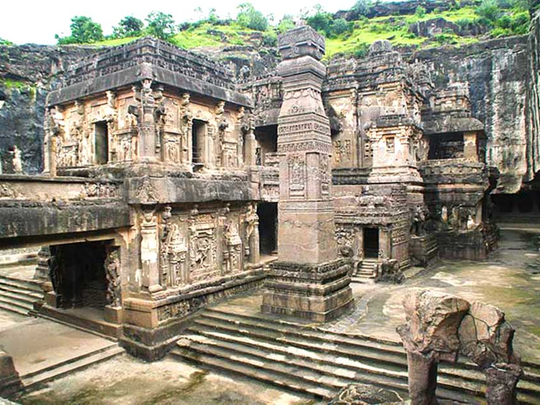
At a time when the eyes and heart of the world have been fixed on a cave system in Thailand and the young boys trapped there, it is only natural for us to recall our own forays into caves in different parts of the world.
Ajanta and Ellora come to mind first of all. Those were probably the first caves we entered when we were young and they remain imprinted in our minds as one of the wonders of our world.
Later, we visited the Pandavleni caves in Nasik that were used centuries ago as a Buddhist monastery. Without a huge number of tourists and easily accessible (if you are prepared to climb the hundreds of uneven steps that lead to them), we often spent an entire day there, exploring and re-exploring the shallow caves. They were good material for the imagination and many stories were spawned from that setting — with much more mystery, because, you see, we dreamt of caves that went deep into the hills and linked up with each other so that we could spend countless hours exploring and searching for treasure.
Whether we would have the courage to actually enter the dark and go where no one had gone before is moot, however, because we never did encounter anything like that.
Instead, in the course of our travels, we found ourselves being led through cave systems in different parts of the world that were fairly well lit, except for the deliberate darkness of the glow-worm caves of Waitomo — where we were treated to the spectacle of thousands of little bursts of light on the ceiling as we slid by in a boat.
Cavernous depths
There was one thing all these caves had in common, however: There was much clambering up and down natural or man-made steps and in some cases, such as India’s Mawsmai Caves in Meghalaya, over boulders that we feared would create rockfalls, as we admired stalagmites and stalactites and imagined all kinds of animal and plant life in the shapes created over millions of years.
Sadly, there was usually someone in our group who had to wait outside for us — and it was not claustrophobia that compelled them to do so. Rather, they looked down into the cavernous depths and knew their knees or their backs or their respiratory systems could not make that uneven descent and thereafter the steep return to the top again. We promised to get pictures for them, we tried to stamp each formation and every curve in the bowels of the earth in our memory, but when we emerged to tell our tale, it never gave an adequate description of our experience.
Now, mindful of our own knees and other random body parts that we know cannot hold out forever, wherever there is the prospect of visiting a cave, we are all for the adventure because who knows when we will be the ones who are on the outside, looking in.
It was therefore a delight to visit the Postojna Caves in Slovenia recently. The cave system is more than 20km in length and we were guided through about a quarter of this. Starting with a 2.5-km ride in an open train reminiscent of the one that takes Harry Potter into the depths of Gringotts, we were then escorted along a smoothly cemented pathway through another couple of kilometres to have our fill of majestic pillars, columns, stalagmites and stalactites.
Of course, the shapes and colours and sights were marvellous. But what we most appreciated was the foresight of the ones who planned the showcasing of these caves: Obviously, they felt that adventures below the ground were for everyone because the entire walkway could have been negotiated by someone in a wheelchair!
Cheryl Rao is a journalist based in India.










